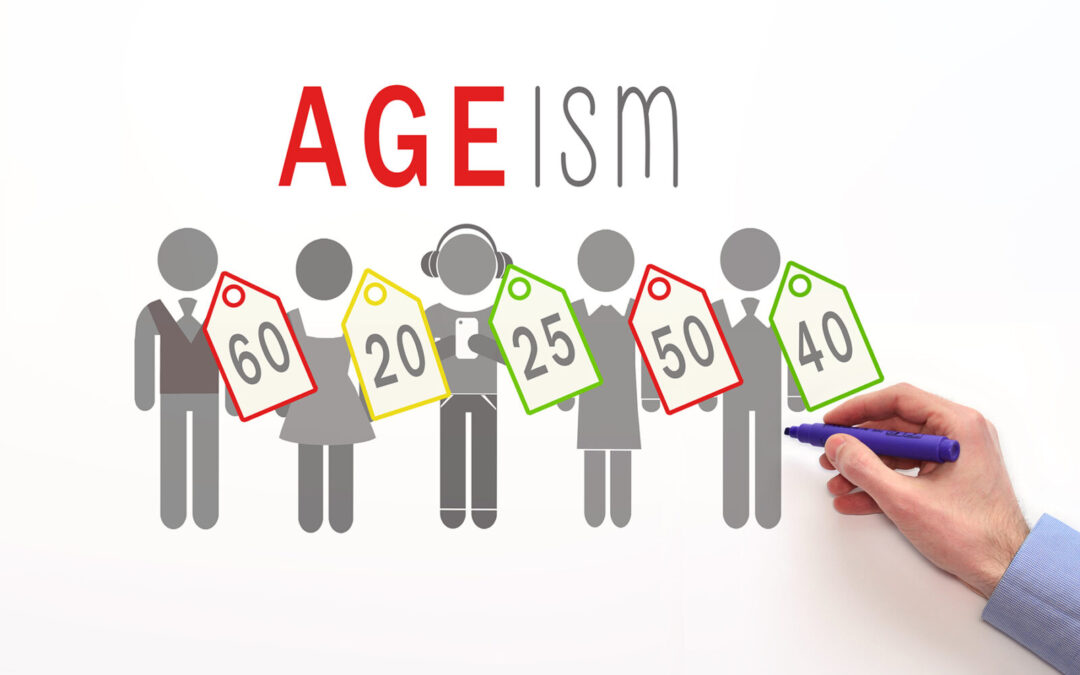In February 2021 I (Ellis Katsof) wrote a blog about what I believed was the greatest challenge facing the Not-For-Profit (NFP) sector, “Investment in leadership development and capacity-building”. Today, together with my colleague Anne Bloom, we are writing about a new, more pressing challenge facing the NFP and For-Profit sectors, a talent shortage. In this blog we will highlight the demographic changes that are underlying the challenge of ageism as well as creative HR changes that can address this issue while strengthening your organization.
Bradley Schurman, in his book “The Super Age”, “examines the way two megatrends – declining birth rates and the radical extension of human life (longevity) – are intersecting to form a super-megatrend that is creating a sharply different, vastly older, and a more generationally diverse society than the one humanity has lived in before”.
That our population is aging cannot be debated. Statistics Canada has been tracking these changes for decades, and its impact is now becoming clear. Canada’s proportion of people aged 65 and older is projected to increase from 18.5% in 2021 to 23.1% in 2043 and 25.9% in 2068 in a medium-growth scenario. The population aged 85 and older may more than triple over the same period, from 871,000 individuals in 2021 to 3.2 million in 2068.
The 2021 Census showed that Canada’s population grew 5.2% from 2016 to just under 37 million people in 2021. Immigration, not new births, was responsible for most of Canada’s population growth during that period. In 2022/23, 468,817 immigrants came to Canada. Canadian births continued to decline in 2022 with only 351,679 across the country. Although new Canadians tend to have a higher birth rate, this reverts within two generations to the Canadian birth rate so this influx of new Canadians will not make up the shortage of workers today or in the future.
According to the quarterly publication by RSM Canada, The Real Economy, Canada, “the pandemic and subsequent reopening have been the catalyst to our labour shortage. At the onset of the pandemic (March 2020), workers were laid off, turned to self-employment or retired early. When the economy reopened (2023), organizations were unable to find enough workers to meet pent-up demand for goods and services.”
There are different ways of resolving our labour shortage. One of them is to hire older workers. Research studies have shown that 60% of older adults want to work, for a variety of different reasons including the need for additional retirement income, looking for a purpose, a sense of identity, an increase in self-worth, a routine and structure to daily life, intellectual stimulation, and social interaction.
In Canada, there is no longer a mandatory retirement age of 65 yet some companies have not changed their policies to reflect this. Sixty-five is still young when you consider that people are living longer. In 2021 the average life expectancy of men was approximately 81 years, while for women it was almost 85. According to Statistics Canada some of us are living much longer than expected: The number of centenarians has increased from 20.5 per 100,000 in 2001 to 34.6 per 100,000 in 2022. As a consequence, if you retire at 65 you may live between a quarter and a third of your life in retirement.
The question older workers are asking themselves is What does retirement look like for me? What will I do when/if I retire? These are solid questions that we all need to explore. For example, many organizations are trying to limit the cost of post-retirement benefits for health, dental, vision care, etc. Most if not all benefit companies provide a clause in contracts that says: “health benefits will cease on or about age 72”. Let’s keep in mind that these are guidelines only and if a company is prepared to cover the cost of benefits for older workers, then the sky is the limit. The issue of benefits for the older worker is one that needs consideration to encourage older workers to remain in the workforce.
Older workers have so much knowledge, know-how, and skills, to continue offering to companies. When companies release an older worker and hire a younger worker, they are paying less but the cost of recruiting a younger worker is high when you consider:
- The high cost of training a younger employee;
- Younger employees have a lack of knowledge, skills and know-how that cannot be quickly learned. It comes with years of experience;
- The ramp up to the job is longer as the learning curve is steeper for younger employees.
A higher salary for an older worker is often worth the spend to keep knowledge, skills, and loyalty inside the company and NOT have these attributes walk out the door. Companies can gain added benefits when they engage with older workers but they may need the assurance that work will get done on time, on budget and within parameters.
Human Resources has an opportunity to change their organization’s recruitment processes and policies. We all acknowledge that fit is a huge aspect of hiring the right person. What is the definition of fit? We believe it is subjective. Fit should be about skills, attributes, and knowledge. Older workers (i.e. anyone over age 50) are still young, able to work, have learned skills, knowledge and experience and can help train others for success. There are also opportunities for mentorship programs linking older and younger workers together so they can learn from each other.
Older workers are qualified for most openings within your company. Not-for-profit and for-profit organizations need to review and update their policies to ensure their organizations are attractive to older workers. Policies should encourage flexible work schedules, mentorship programs, menopause support programs, benefits for the older worker, flexible vacation schedules, etc.
Let’s not despair about the trend towards an aging workforce. Older employees are assets to all organizations, colleagues, clients and communities for their knowledge, know-how and ingenuity. Embrace, accept, and value the decades of experience that older workers bring to all they do. When planning your workforce needs include the value-add the aging workforce bring with them. As an older worker, their goal is to continue adding value to society. Let’s not allow ageism to win.
Ellis Katsof and Anne Bloom are consultants at The Osborne Group.






